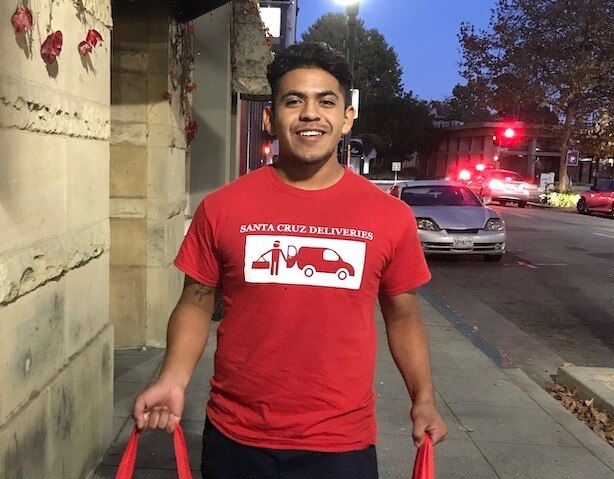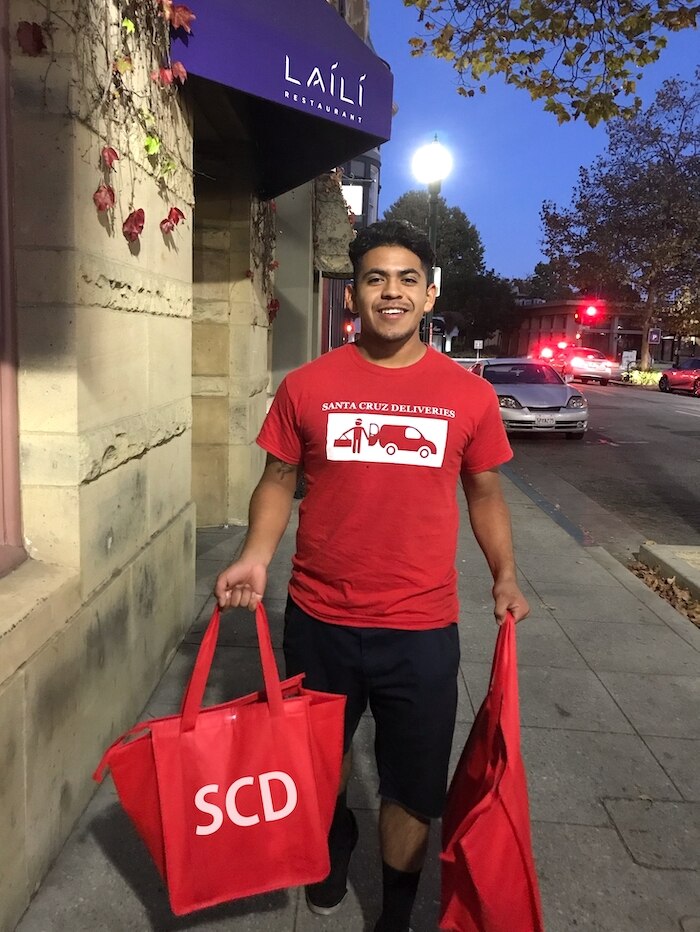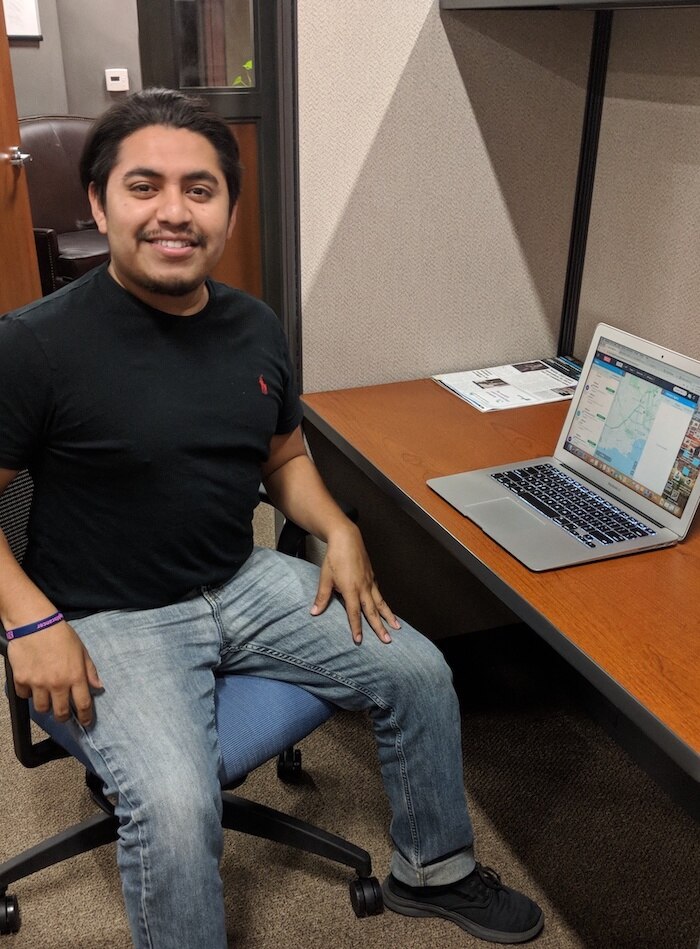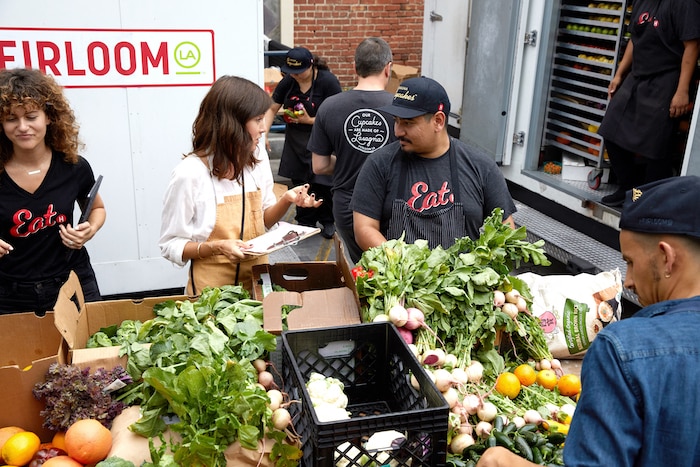Whether he realized it or not, Daniel Hernandez spent most of his life preparing to launch his current business, Santa Cruz Deliveries , which he co-owns with his brother Gerardo and his friend Annie. We sat down with Daniel to learn how he started his business and how he solved one of his biggest pain points of managing employees’ expenses with Bento for Business.

How Santa Cruz Deliveries Manages Employee Expenses with Bento for Business
The Building Blocks of Daniel’s Business
When we asked Daniel for his advice to other people thinking of starting a business, he said, “Just go for it. A lot of people keep postponing it – they say it’s not right yet; it’s not the right time. That’s just not the case.”
He also advised starting with what you know: your community and the problems you see there. Daniel saw that his hometown, Santa Cruz, Calif., didn’t have many food delivery options, such as Doordash and Postmates, beyond local pizza delivery. His business idea made a lot of sense and ended up working out very well for him.
But, behind Daniel’s ability to see the problem of insufficient food delivery options (in a college town, no less!) was his unique background.
First of all, he’d worked in the restaurant industry for seven years, starting as a dishwasher and eventually running a kitchen. He took culinary classes in college and worked as a sushi chef for a while. Then, he decided to return to school, this time to study business.
While he was a student, he drove for Uber and Lyft to keep up a flow of income with a flexible schedule. As he drove the residents of Santa Cruz, he had conversations with them about the lack of food delivery options. He took informal surveys of his riders, asking how much they’d be willing to pay for food delivery.
And, then came the aha moment: he could be the one to launch a food delivery business.

Start Simple and See What Works
Some aspiring business owners would spend months building the right platform and getting enough restaurants on board. Not Daniel.
“We used existing software to get started,” he said. “We had six restaurants when we launched, with just six menus.”
In Daniel’s view, the goal was not to launch a perfect platform, but instead, to figure out as fast as possible whether his idea for a Santa Cruz-based food delivery business could work.
And, how did he find the software he used?
“I googled,” he said. “That’s what I do. I get curious about something, I research online and I figure it out.”

One problem he knew he needed to solve was handling payments. For restaurants that had partnered with them, customers could pay directly through the app. For everyone else, he needed a way for his drivers to pay for food when they picked it up. When Santa Cruz Deliveries started, drivers used a normal bank card.
“But, the bank kept shutting us down for too many transactions,” he said.
That proved to be a major headache – it would take a few hours to get the bank to unfreeze the card, and in that time, they weren’t able to make deliveries for restaurants they didn’t have partnerships with.
So, Daniel started researching his options. He tried distributing prepaid cards to his drivers, which solved the problem of freezes, but presented a whole new batch of headaches.
“We had to go into the store every few days to load funds,” he said.
Even worse, there was no way to easily track how much money was left on everyone’s card. When one driver claimed his card was stolen but actually spent the money for his own purposes, Daniel knew he had to find something better.
That’s when he returned to Google and came across Bento for Business.
Hitting His Stride
Bento cards solved the problems Daniel and his co-founders had encountered with other payment solutions:
- Vendor category limits so the cards only work at approved vendor type (restaurants), which prevents improper use.
- Spending limit for every card to prevent any single driver from spending more than what Daniel and his co-founders approve.
- Auto-reloading to eliminate time-consuming trips to add funds.
- On/off card switch to deactivate a card when it’s not in use, or in case a card is lost or stolen.
- Real-time dashboard and alerts on card activities so they can monitor how the cards are being used and take action, if necessary.
Today, his drivers use Bento cards to pay for orders at any restaurant that doesn’t have a direct partnership with Santa Cruz Deliveries. Daniel and his co-founders keep the dashboard up on a monitor so that they’re always on top of what’s happening.
The business is maturing in other ways, too. Once Daniel and his co-founders proved that their model worked, they hired developers to build a proprietary platform.
“We have more control now,” he said, which is crucial for their growth plans.
Learn more about how to control and track employee expenses from anywhere with Bento for Business at the QuickBooks App Store.
Unauthorized.










